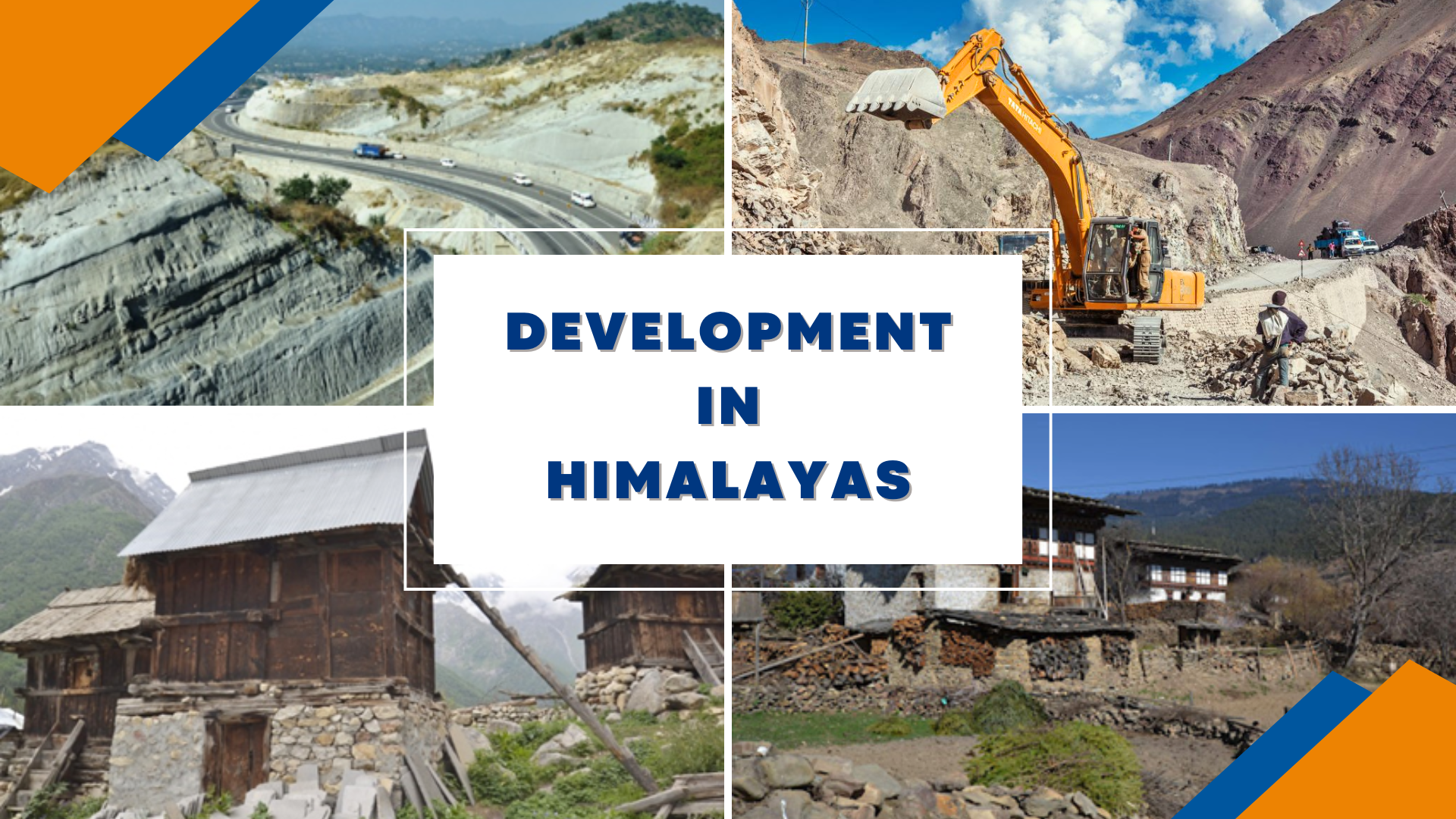Home » Re-evaluating Development in the Himalayan Locale

The Himalayan region, renowned for its majestic landscapes and cultural richness, faces unique challenges and opportunities for development. As we reconsider development strategies in this ecologically sensitive and geopolitically significant area, it is crucial to balance economic growth with environmental sustainability and social equity.
The Himalayas, or Himalaya is a mountain range in Asia, isolating the fields of the Indian subcontinent from the Tibetan Level. Mount Everest, the highest peak on Earth, is one of the range’s peaks. In excess of 100 pinnacles surpassing rises of 7,200 m (23,600 ft) above ocean level lie in the Himalayas in late times development in Himalayas is occurring at large level subsequently upset the Himalayan terrain. As per report of Hindustan times in west Himalayas biological equilibrium is profoundly upset because of uncontrolled development of numerous enormous govt projects.
Urban Greens: An Adaptation to address Climate Change
Throughout the long term, we have lost information on how structures were customarily underlying the slopes. Small, low-rise buildings with a low center of gravity built with timber and stones dotted the hillside in the original typology’s history. This information includes an instinctive comprehension of the topography, physical science and by and large prosperity of the regular environmental elements, sharpened over ages. It is unfortunately not reflected in structures and crucial framework offices today.
That is one of the main reasons why these newly constructed structures are unable to withstand the forever changing mountains and rivers, resulting in a tragic number of deaths and disaster-ravaged areas. While logical headways in planning dangers, observing, early admonition frameworks, and geotechnical information gathering have been made, the standards of ‘Himalaya-accommodating’ design have to a great extent relapsed.
3D Modelling Has Impacted the Architecture
“Rethinking the Goal of the Pakka Ghar is Necessary.”

Chasing safeguarding the fragile environments of the Himalayas, a far reaching approach is fundamental. This includes the improvement of district explicit codes customized to the special weaknesses of the delicate Himalayan biological systems. Perceiving the different idea of the Himalayan zones, endeavors ought to be guided towards evaluating local laws to oblige varieties, particularly in regions where mountains are still moving.
Also, cultivating reasonable practices in overseeing sustainable backwoods assets is critical for the prosperity of neighborhood networks, supporting the development business, and advancing ecological stewardship. The development of regulations that strike a balance between human settlement and ecological preservation necessitates the analysis of the Himalayan towns’ land carrying capacity.
Through these actions, an amicable conjunction can be accomplished, guaranteeing the success of both the nearby networks and the World’s priceless normal legacy.
From
Ar. Vivek Painuli
Assistant Professor (SOA)
Lingaya’s Vidyapeeth
Best Architecture Colleges in Delhi NCR
Lingayas Vidyapeeth stands out as the best architecture college for B.Arch, B.Plan, and M.Plan programs . Our comprehensive curriculum combines innovative design theory with practical experience, ensuring students gain the skills needed to excel in the architecture field. Join Lingayas Vidyapeeth to embark on a rewarding educational journey and build a successful career in architecture.
May 17, 2024
RECENT POSTS
CATEGORIES
TAGS
Agriculture Agriculture future AI Architecture artificial intelligence BA English BA Psychology BTech Engineering Business management career Career-Specific Education career guide Career Opportunities career option career scope Civil engineering commerce and management Computer Science Computer science engineering Data science degree education Engineering engineering college Engineering students English Literature english program Exam tips Fashion Design Fashion design course Higher Education Journalism journalism and mass communication law Law career Machine Learning MA Psychology Master degree mathematics MBA Mechanical Engineering Pharmacy Psychology Research and Development students
University Address: Nachauli, Jasana Road, Faridabad, Haryana
Toll Free: 1800-120-4613
Mobile : 8447744303 | 8447744304 | 8447744306 | 8447744309
Address: C-72, Second Floor, Shivalik, Near Malviya Nagar,
Above HDFC Bank, New Delhi 110017
Ph.No. - 011-46570515 / 45138169 / 41755703 / +91-7303152412
Jagmani Kutir, Ground Floor, Road No-1, Rajeev Nagar,
Near Darbar Marriage Hall, Patna-800024, Bihar
Contact No: 9818352069/8130120095
Mail: [email protected]
Copyrights © 1998 - 2025 Lingaya's Vidyapeeth (Deemed To Be University). All rights reserved.
It is important to note that the following email IDs and domains are fraudulent and do not belong to our university.
LV only conducts physical/online verification of any document related to examination on the following email id: